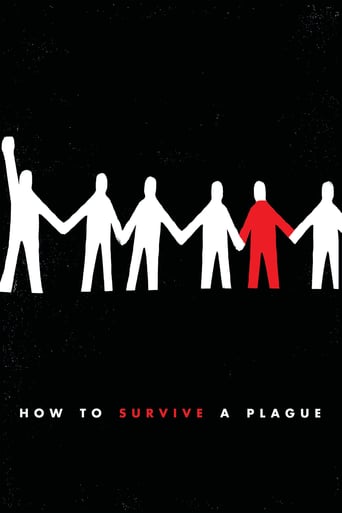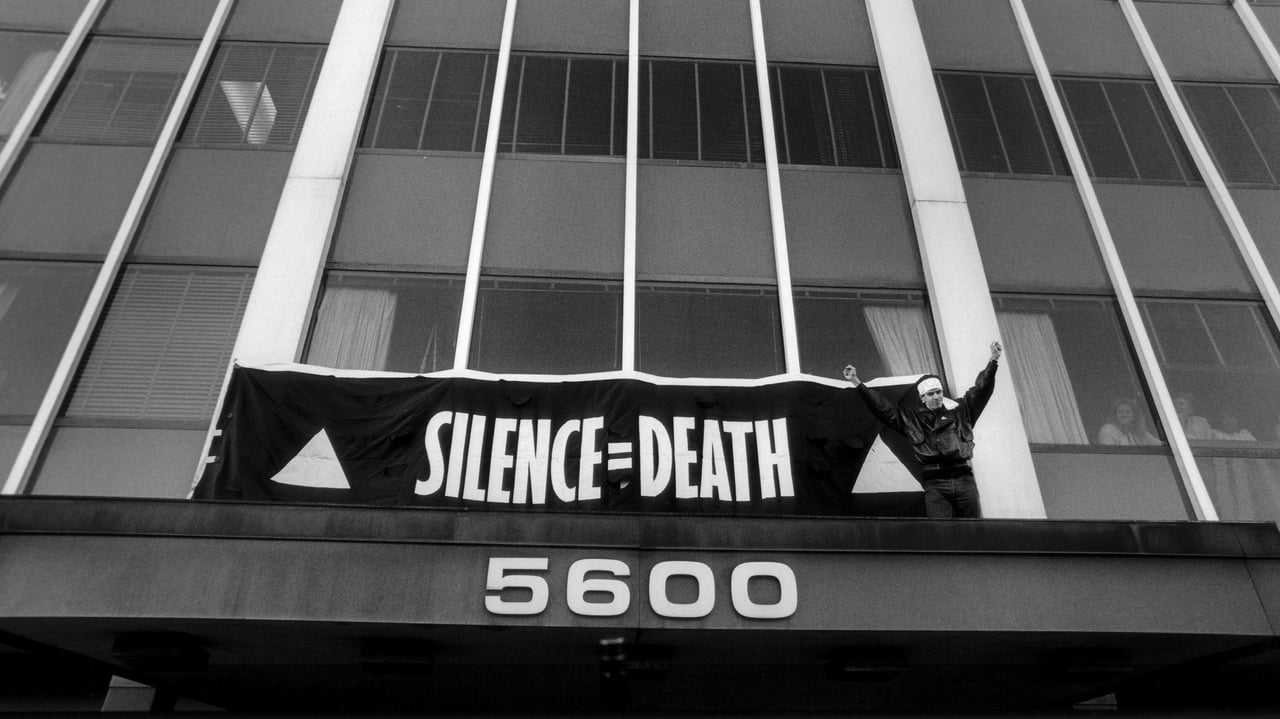vilj-1
This documentary was shown by PBS, in my area, on Monday 12/30/2013. That was GOOD, since otherwise, I would not have watched it, because I didn't even know this 2012 documentary even existed. The BAD part of it, is that PBS showed it from 11pm to 12:30pm, therefore they showed a close to a 1:30 hours documentary and the running time of it is 1:50 hours. That's 20 minutes of footage missing from the original documentary, which was filmed with a running time of 110 minutes. Documentaries are usually well edited, that's why there is always a lot of "extras," deleted scenes and so on. GOOD for PBS for showing it, but BAD (very bad) for cutting 20 minutes from it.
meeza
"How to Survive a Plague" is a gripping documentary that tracks down the chronological history of HIV and AIDS, from its onset in the early 80's to today. During the 80's, it was actually a plague killing millions of people. The documentary focuses on two advocacy groups ACT and TAG, and their tireless work for decades to persuade U.S. governments to allocate more funds for AIDS research and medicine. Their efforts helped turn AIDS from a fatal disease to a manageable condition. This documentary might be hard to survive through; not because of any inadequacy but because of the frightful scenes showing how many young people with bright futures died from AIDS. Director David France proficiently exhibits the work of ACT and later TAG from its very beginnings, and then finalizes it showing several ACT & TAG members today in how they were able to survive AIDS. These brave & honorable men practically saved their own lives with their advocacy efforts, and that is one ACT that if hard to follow. OK, now TAG, you are it. Because it is your turn to get educated with France's love letter to ACT & TAG with a "How to Survive a Plague" viewing. **** Good
Markus Emilio Robinson
By using (mostly) never before seen archival footage, David France's unflinching documentary "How to Survive a Plague" DOCUMENTS the early epidemic of the AIDS virus in the United States, during a time when it was seen as a death sentence.With a mixture of video from protests, support rallies and home movies, France portrays actual struggling AIDS victims/activists as their friends and family members begin to go blind and die around them, and the US government does little in way of assistance. France also does a great job of not only showcasing the overwhelming amount of discrimination during the 80's and 90's, which altogether ostracized anybody with AIDS or people that had any linkage to the gay communities, but succeeds in his attempts to dissect the human condition, by showing how far a determined group of people are willing to go for change.The rest of the footage, which shows government officials such as former Senator Jesse Helms, former President Ronald Regan and former President George Bush Sr. is maybe the most shocking aspect of this film; as they come off as negligent and at times so blatantly prejudiced, that it's disturbing to think how everything depicted here took place only between 20 and 30 years ago.Beginning in New York with the denial of the AIDS epidemic by former New York Mayor Ed Kotch, to the introduction of the highly toxic drug AZT (the most expensive drug on the market at the time, and the only one used to prolong the life of AIDS patients) to the Roman Catholic Church condemning the use of condoms, and ending with the evolution of ACT UP and TAG (Treatment Action Group) a group of activists (most of whom had the AIDS virus themselves) who revolutionized the way AIDS was treated, turning it into a manageable condition; the importance of this film lies in its documentation of a disenfranchised people during a time in American history that isn't broached in the classroom. But equally as interesting as the subject matter, is how creatively this documentary is put together. This archival footage format is truly an ingenious way to tell a narrative, really working on an almost purely visceral level to capture the times and atmosphere of a real life American revolution, in a way not many documentaries have the ability to do.Final Thought: "How to Survive A Plague" is not only an informative, fascinating, and sure to be award winning film, but also one of the most powerful documentaries of 2012. There's not much more I can say about this documentary, other than that actually sitting down and witnessing what this film has to say, for yourself will undoubtedly create a deeper impact and elicit more of an emotional response than any mere words can say.Written by Markus Robinson, Edited by Nicole I. Ashland Follow me on Twitter @moviesmarkus
MisterWhiplash
That seeming rarity: an incisive, heartfelt documentary about people doing good that is important, even today as AIDS is not the 'plague' it once was. It shows what people will do when they are pushed to a limit - it's not even about gay rights but about human rights, for proper health-care for the deathly ill. It's filmmaking that doesn't shy away from the rougher areas - when there is infighting in ACT UP, the director (first timer David France) shows it warts and all. But it's the heroism by the likes of Peter Staley and Mark Harrington that shines through the most. As Roger Ebert said, it's most emotional for the audience with a drama when seeing good people suffer, as do the people in ACT UP and in the AIDS crisis, and in doing good, against all odds. We get the sense that they were not just fighting for themselves, though that was certainly a big component, but fighting for the millions that needed the medicine that could at least be attempted. The saddest part is seeing the trial and error over the years, where people who did take the early drugs like ATX just didn't get better like they should've. It's a bittersweet conclusion since by the time the medicine did get to the point where AIDS was at least something people could try and not, you know, kill them, so many had already passed (the ticker per-year that comes up becomes more and more shocking, albeit a lot of these numbers were from Africa). As a document of the AIDS/HIV crisis and as a pure protest movie and 'Fight the Powers That Be!' saga, it's moving, harsh, and keeps its story moving with compelling people who faced up to the fact that their fight had to be about science even before it being a social issue. Oh, and the sort of 'reveal' you don't even expect in the last ten or so minutes... it shoots this up to being essential viewing.


 AD
AD


